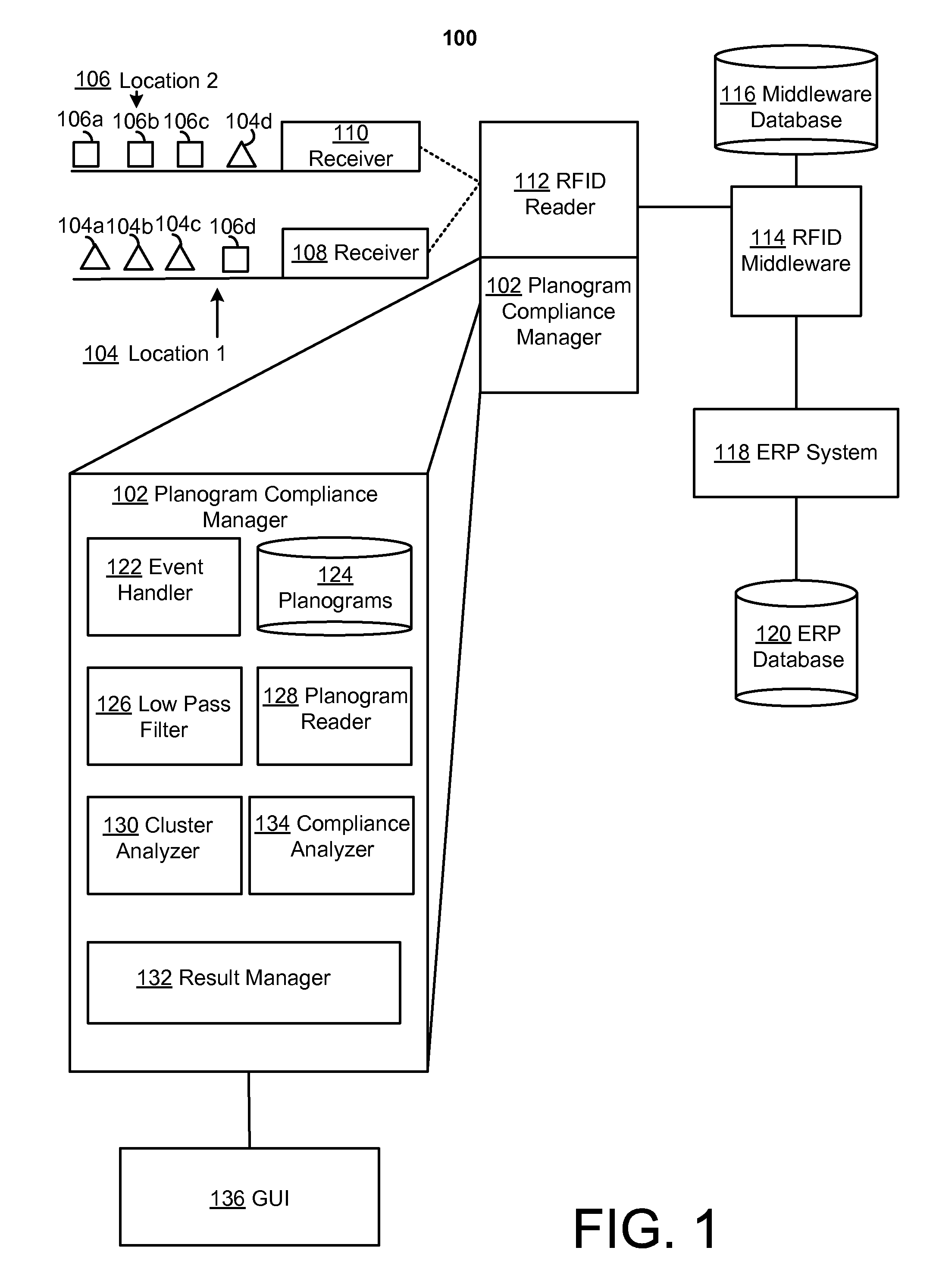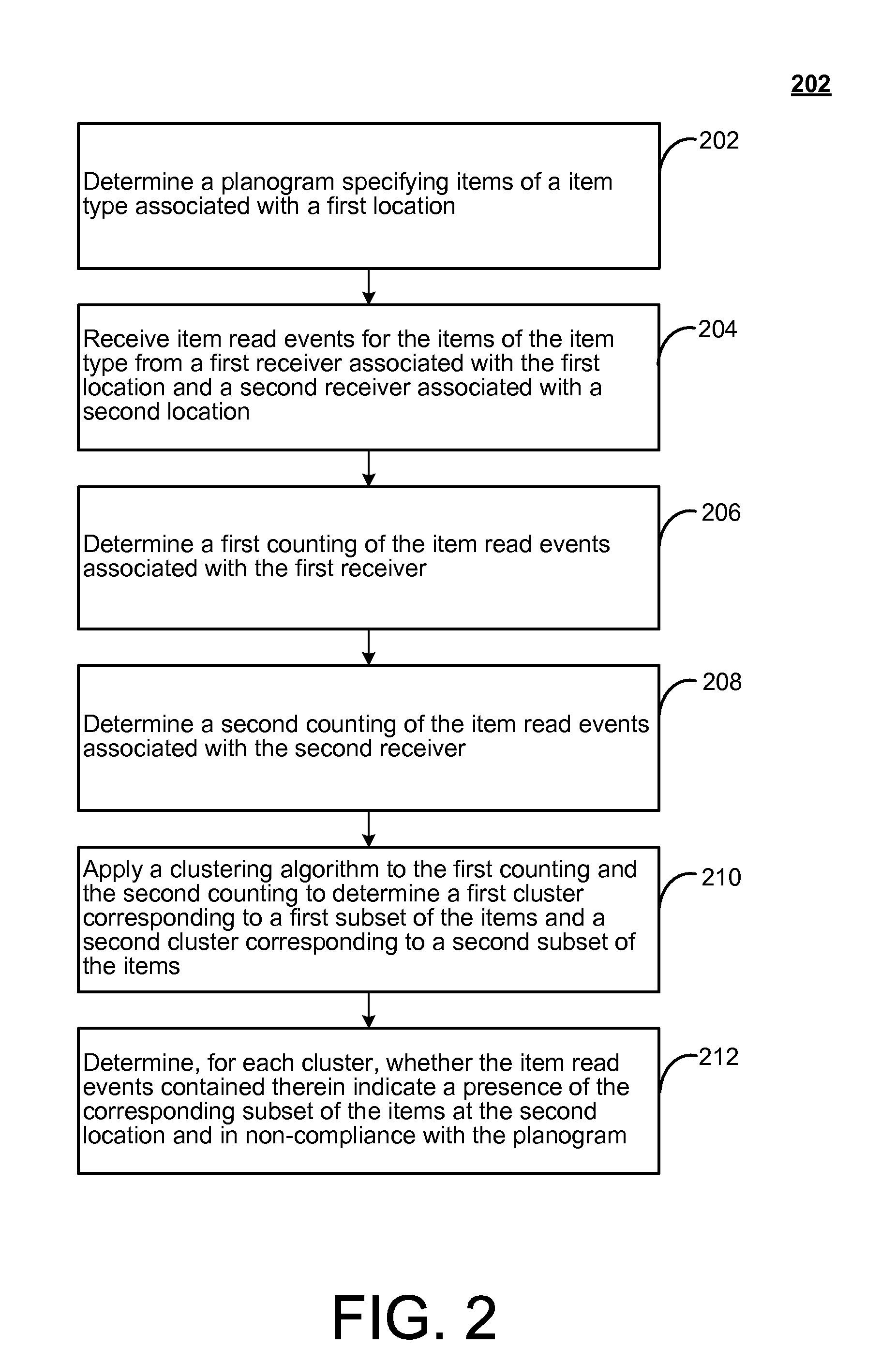Planogram compliance using automated item-tracking
a technology of item tracking and planogram, applied in the direction of instruments, electrical equipment, pneumatic/hydraulic sensing, etc., can solve the problem that planograms are difficult to enfor
- Summary
- Abstract
- Description
- Claims
- Application Information
AI Technical Summary
Benefits of technology
Problems solved by technology
Method used
Image
Examples
Embodiment Construction
In view of the above, RFID and similar item tracking technologies may have potential to enable or facilitate planogram compliance. E.g., in the above examples, RFID readers may be used to detect a presence of items of the various product types for comparison against an appropriate planogram. For example, a first RFID reader may be placed at a first shelf and configured to have a reading range sufficient to detect items placed on the first shelf. Similarly, a second RFID reader may be placed on the second shelf and configured to have a reading range sufficient to detect items placed on the second shelf. In this way, readings from the RFID readers may easily be associated with the corresponding shelves. Then, any detection of misplaced items may be responded to by the appropriate personnel in order to comply with the appropriate planogram (e.g., moving a misplaced item from an incorrect shelf to a correct shelf).
However, in practice it may occur that the RFID or other similar item tra...
PUM
 Login to View More
Login to View More Abstract
Description
Claims
Application Information
 Login to View More
Login to View More - R&D
- Intellectual Property
- Life Sciences
- Materials
- Tech Scout
- Unparalleled Data Quality
- Higher Quality Content
- 60% Fewer Hallucinations
Browse by: Latest US Patents, China's latest patents, Technical Efficacy Thesaurus, Application Domain, Technology Topic, Popular Technical Reports.
© 2025 PatSnap. All rights reserved.Legal|Privacy policy|Modern Slavery Act Transparency Statement|Sitemap|About US| Contact US: help@patsnap.com



